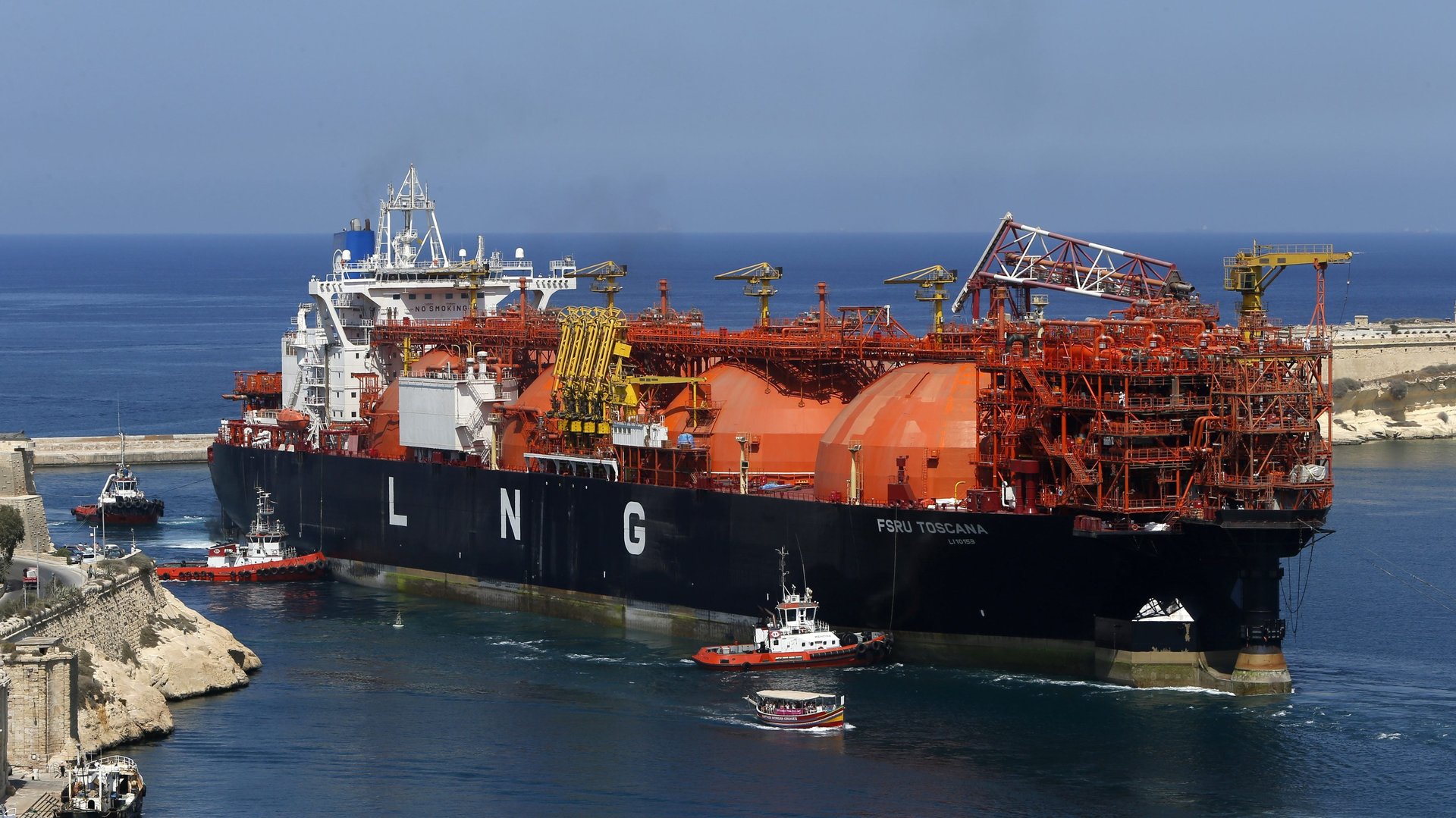The US is winning the last fossil fuel gold rush
Newly-built US terminals and record-high prices in Europe have made the US the world’s top exporter of liquified natural gas for the first time, according to Bloomberg data for December 2021. With president Joe Biden looking to spend billions of dollars to decarbonize the US economy, the US is leading the last growth market for global trade in fossil fuels. Power plants worldwide, especially in Asia, are boosting demand for gas as they scramble coal, which is more polluting and releases more CO2.


Newly-built US terminals and record-high prices in Europe have made the US the world’s top exporter of liquified natural gas for the first time, according to Bloomberg data for December 2021. With president Joe Biden looking to spend billions of dollars to decarbonize the US economy, the US is leading the last growth market for global trade in fossil fuels. Power plants worldwide, especially in Asia, are boosting demand for gas as they scramble coal, which is more polluting and releases more CO2.
Less than a decade ago, the US was a net importer of gas, mostly from Canada. The fracking boom of the mid-2010s unleashed vast new volumes of domestic supply, and the US became a net exporter in 2017. Since then, US LNG export terminals have expanded their capacity by six-fold, catching up to the capabilities of Australia’s and Qatar’s ports.
US LNG developers had their eyes on the fast-growing Asian market, but the cancellation in December of a proposed terminal on the West Coast was a setback to that effort. The energy crisis that has unfolded in Europe over the past several months provided a decisive boost: Russian exports to Europe were lower than expected, and cheaper shipments from the US were diverted to fill the gap. The US is expected to maintain its leading position into 2022 as still more export facilities begin operating.
As the US exports more gas, it is using more coal
Meanwhile, as more US gas goes overseas, domestic prices are rising as well. As a result, many power producers in the US have opted to increase their reliance on coal. Coal consumption in the US was 22% higher in 2021 than in 2020, according to federal data, the first yearly increase since 2014.
In other words, the use of US fossil fuels to lower energy costs and emissions in other countries is contributing to an increase in domestic carbon emissions. That makes it harder for the US to meet the Biden administration’s goal to cut emissions in half by 2030.